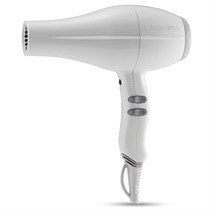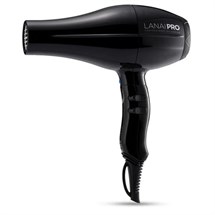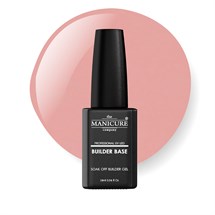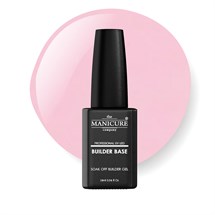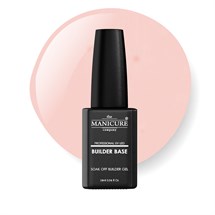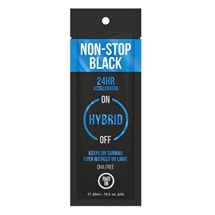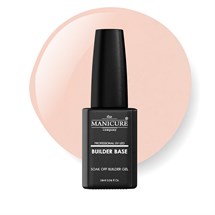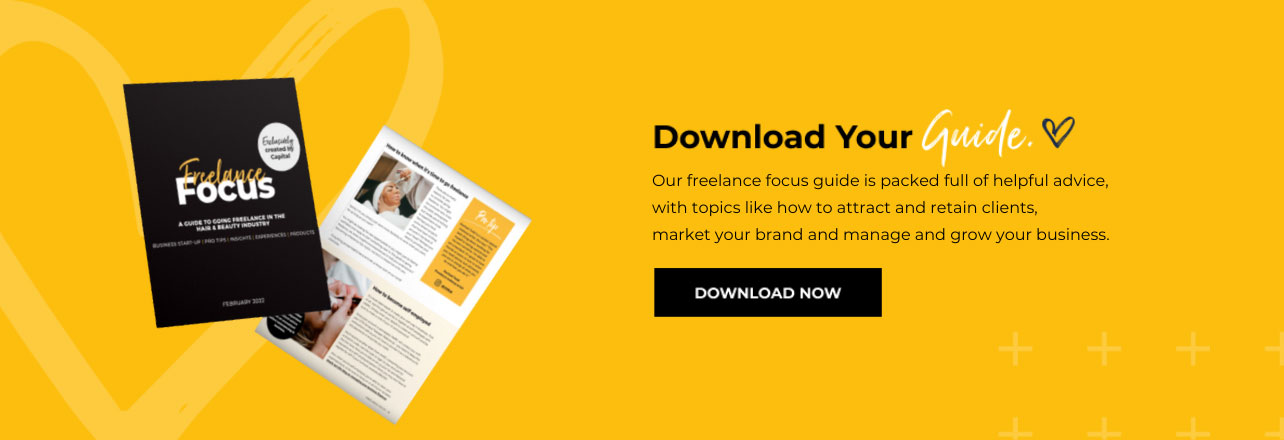Menu

Working out your finances as a freelancer
More and more people in the hair and beauty industry are going freelance and one of the keys to sustainable success is knowing what’s happening with and how to manage your finances. Here we break down our top tips to get your started.
Ask yourself: how do you want to work?
The easiest way to go freelance is to rent a chair or space in an existing hair or beauty salon. You can pay a fixed monthly fee for unlimited use of the chair or it could be worked out as a daily rate. Or you could agree on a split of your business income. For example, 60/40 in your favour, or the salon could say they need a guaranteed minimum amount per week/month.
What do you want to earn?
If you’d rather be a mobile or home-based freelancer, then you need to consider the figure that you’re happy to have in your personal bank account at the end of each month. To do this you need to consider what your monthly expenses might be, such as:
· Wifi
· Water/Utilities
· Phone
· Products – link to website for products
· PPE Equipment – Link to PPE Equipment on websites
· Retail Stock – Link to retail stock ideas on website
· Virtual Office/Assistant
· Advertising
· Insurance/Licences (Public Lability/Legal Fees
· Accountancy Fees
· Booking/Accountancy Apps
· Petrol/Travel costs
Don’t forget to consider any set up costs to get you started. You may need a travel kit if you are mobile or furniture if setting up a home salon – check out this blog on setting up your home salon.
Once you have a good idea on what your monthly cost will be, simply add them all together and then multiply them by 12. Then add on your desired annual salary and divide that entire amount by 12. This is the amount you need to take in each month.
Once you have a clearer idea on what you need to earn each month, you will need to consider how many clients you need to service within the hours you wish to work, to meet that amount. This will help you get to your final cost per service.
Try: Using an online calculator, like calconic.com that allows you to input your expenses, including your salary.
Top Tip: Are you able to provide any add on treatments/services to help maximise the time a with a client, which in turn increases your earning potential.
Time to review
From time to time you will need to review your prices; this should first be based on your own costs. Have your costs gone up in the past year? Have things become a little tighter?
Find out where and why your costs have increased and if you are able to pass this on to your clientele. Also, look at the rise in inflation; most businesses increase their prices by 10 percent year upon year to reflect this so don’t feel like you can’t!
Top Tip: Keep track of your monthly outgoings by adding them a spread sheet or accountancy app. Then each month, update any increases or decreases so you can keep on top of any changes.
For further reading on how to set your prices, check out this blog: How to price your services as a freelancer.
Keep up with your finances
While it’s vital to have goals, cashflow plans and revenue aims when you’re starting out, you must not avoid handling your outgoings and taxes.
The easiest way to keep on top of your finances is to hire an accountant/tax consultant for a monthly fee. They will handle everything from Income Tax to VAT returns. Or, if you want to save some money, you can use online software such as QuickBooks, which offers a simple package from as little as €4.50 per month. A good in-between option? Do your own recording and invoicing via QuickBooks, then hire an accountant when it’s time for tax returns.
There are some other great accounting apps out there, such as Xero, which has desktop and phone apps that allow you to record your expenses as you go, making Self-Assessment time less of a stress!
For further tips and advice, check out the blogs on our Freelancer Focus webpage or download our Freelance Focus Guide.
Related Posts
Helpful apps and online services to stay organised
While starting your own business can feel like an endless list of tasks there is so much you can do via your phone and a variety of apps.
The power of social media
When it comes to being a hair or beauty pro – freelance or salon-based – social media offers your clients a window into your creations, how you work and how popular you are.
How to set up your at-home salon
There are various ways you can go freelance; while some hair and beauty pros prefer to rent a chair or space in an existing salon, others love the freedom and flexibility of creating their own at-home workspace.
How to get and keep clients as a freelancer
Starting your own business can definitely be daunting, but once you’ve got your clientele sorted, you’re halfway there! Here we break down some useful tips to getting and retaining your clients.
How to price your services as a freelancer
Deciding on your costs can be one of those super difficult decisions that you’d rather not deal with. However, it is an important step, so make sure you do your research. Here are some tips to help make the process that little bit less painful.
Setting up your business
There are so many reasons for you to consider going freelance but what does it really entail when it comes to the paperwork side of things? Here we share our top tips to get you started.
Managing Your Finances as a Freelancer in 2023
More and more people in the hair and beauty industry are going freelance and one of the keys to sustainable success is knowing what’s happening with and how to manage your finances. Here we break down our top tips to get your started.
New & Trending
NEW
Delivery
Collection
Please login to your account to check stock in your local store.
NEW
NEW
NEW
NEW
NEW
NEW
NEW
Delivery
Collection
Please login to your account to check stock in your local store.
NEW
Delivery
Collection
Please login to your account to check stock in your local store.
NEW
Freelance Focus
Freelance Focus, is a one stop resource for anyone working as a freelancer or thinking of going freelance in the hair & beauty industry, which includes a FREE downloadable guide filled with advice, useful insights, experiences and tips (from experienced freelancers) to help you understand the steps needed to make the right choices for you.
Back to Posts
Tags
- 2024
- acne
- apps
- autumn
- awards
- balayage
- beauty
- blonde
- bridal
- brows
- business
- capital & me
- career
- celebrities
- christmas
- chrome
- clean
- colour
- covid-19
- curls
- facial
- fashion
- festival
- finance
- freelance
- gel
- gellux
- get the look
- glam
- hair
- hairdressing
- halloween
- how to
- hygiene
- indola
- inspiration
- interview
- keratin
- keune
- l’oréal
- lashes
- lockdown
- l'oreal
- loyalty
- macadamia
- make up
- manicure
- marketing
- mens
- mental health
- mobile
- nail art
- nail inspiration
- nail trends
- nails
- new years
- nxt
- olaplex
- opi
- party
- pulp riot
- redken
- retail
- salon
- salon management
- salon system
- schwarzkopf
- self-employed
- shampoo
- skills
- skincare
- social media
- spa
- spring
- step by step
- summer
- tanning
- the met gala
- tigi
- tiktok
- tips & advice
- toning
- training
- trends
- trevor sorbie
- tutorial
- updo
- valentines
- volume
- wahl
- waxing
- wella
- wellbeing
- winter
Latest Posts
- We Are Schwarzkopf - For Every You
- How to Manage Your Stress for Stress Awareness Month (and Beyond)
- Bridal Hair & Beauty Secrets: Expert Tips from the Duo Behind ‘Bridezilla’
- Butter Yellow Is the Colour of the Season
- Vitamino Color Spectrum - Lock In Your Day 1 Colour Vibrancy For Up To 100 Days*
- Week in My Shoes: A Day in the Life of Craig Purves
- Embracing Grey: Expert Tips on Perfecting the Grey Hair Blend Trend
- How to Raise Beauty Prices Without Losing Clients
- Billie Eilish’s Jellyfish Haircut: The Trend Taking Over Salons
- Increase Your Profit - Adding Shinefinity Top Glaze to Every Look







